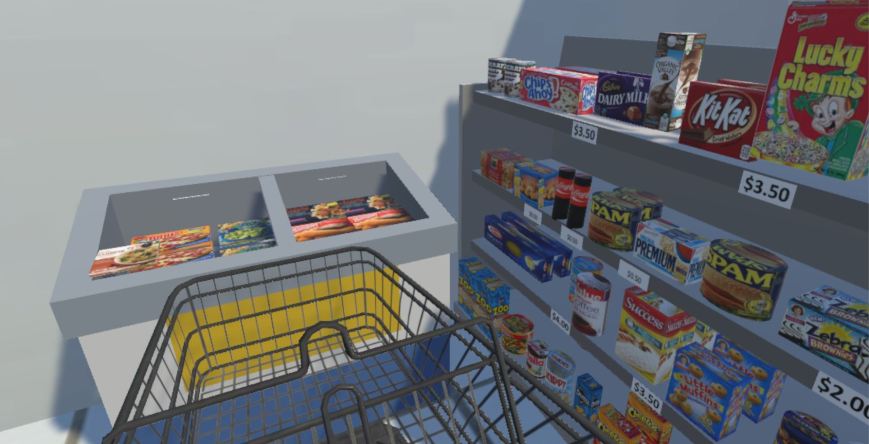Avatar creation is at the forefront of VR technology. Allowing individuals to be embodied by their own created avatar gives rise to a more immersive and engaging experience. But what about when their avatar doesn’t quite look like them? Senior research assistant Aishwariyah Dhyan Vimal aimed to answer this very question.

The Grocery Store
In her recent study, participants were asked to shop in a virtual grocery store for one week’s worth of groceries in a “food desert”. Items varied in relative health benefits as well as price, with each participant having a budget of $60. The experimental variable was the assigned avatar, being either slender or obese.
Aishy set out to find whether or not the embodied avatar would affect the shopping habits of participants.
In an effort to make the experience more authentic, each participant’s created a unique head to their avatar using facial generation technology. Some participants noticed their avatar’s relative obesity immediately, one even saying, “Whoa, I’m fat.”
When asked what was behind this project, Aishy turned to public policy. “I looked at the public policy to reduce obesity and food deserts. The obesity epidemic in the USA continues to worsen and the implementation of the public policy will help reduce this problem.” The research also looked specifically at “food deserts” asking, “would participants be more supportive to public policy to reduce obesity?”

Aishy noted the struggles she went through working on a senior honor thesis, having to learn many new skills to make everything work. “From creating a virtual reality environment in Unity, creating customizable avatar heads, Qualtrics survey, data analysis, and conducting an actual lab experiment.” The growing researcher ended with acknowledging how happy she is she pushed through it and finished.


